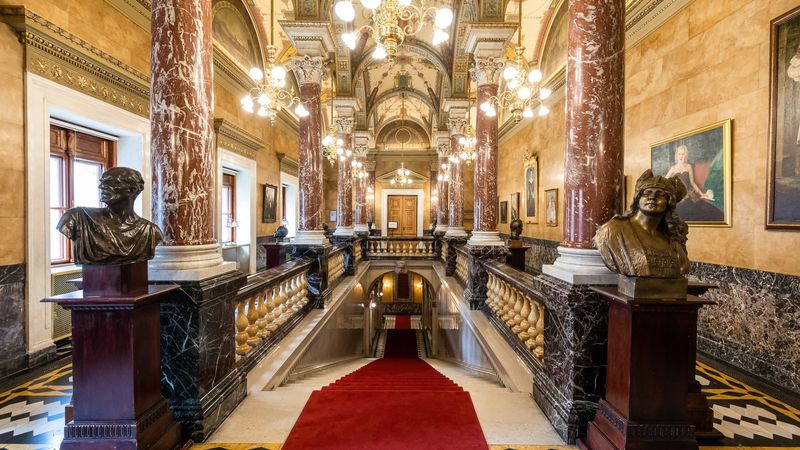
Franz Joseph I and Queen Sissi have trod the very steps that lead up to the salons on the first floor. The original function of the separate stairs leading from the carriage ramp on Dalszínház Street has been retained, though today it is also used for performances.
The children’s version of the opera Die Entführung aus dem Serail and the opera La serva padrona were staged here, and this venue is also used regularly for matinee and chamber music performances. The room is home to two original pieces of furniture, the oak benches adorned with sphynx armrests. The walls are decorated with Mihály Kovács’s lesenes depicting Puttos making music. Two statues of pages by Gyula Bezeredi stand on either side of the stairs.
A famous mirror stands atop the stairs: legend has it that Queen Sissi loved this mirror because it made her appear thinner. The mirror was also useful because etiquette dictated that the royal pair were not allowed to gaze to the right and left, and this allowed them to study the richly decorated interior spaces. And there was (and is) a lot to take in, as the upstairs gallery opening from the Royal Stairs is one of the Opera’s most beautiful rooms: its decorations were made by the Scholtz Workshop. The lunettes depicting landscapes are the work of Gyula Aggházy and the seventeen paintings in the gallery were made by Mihály Kovács.